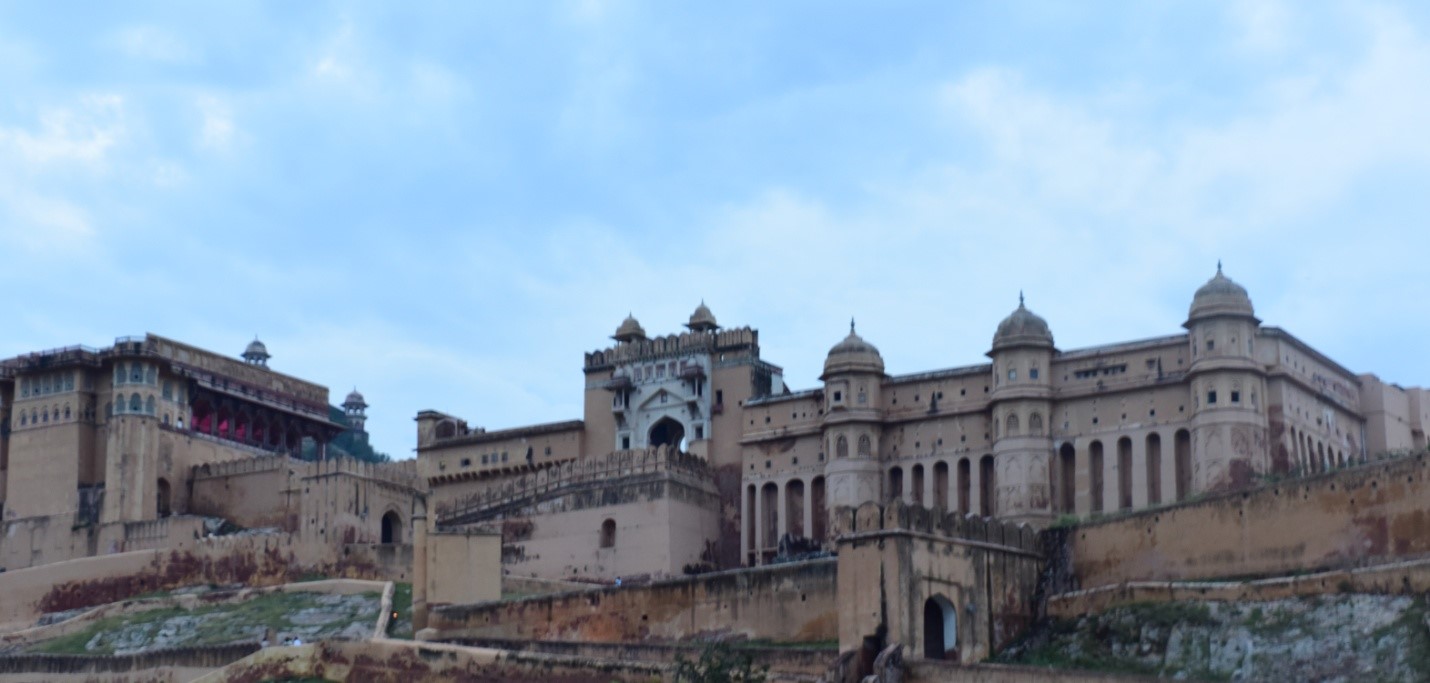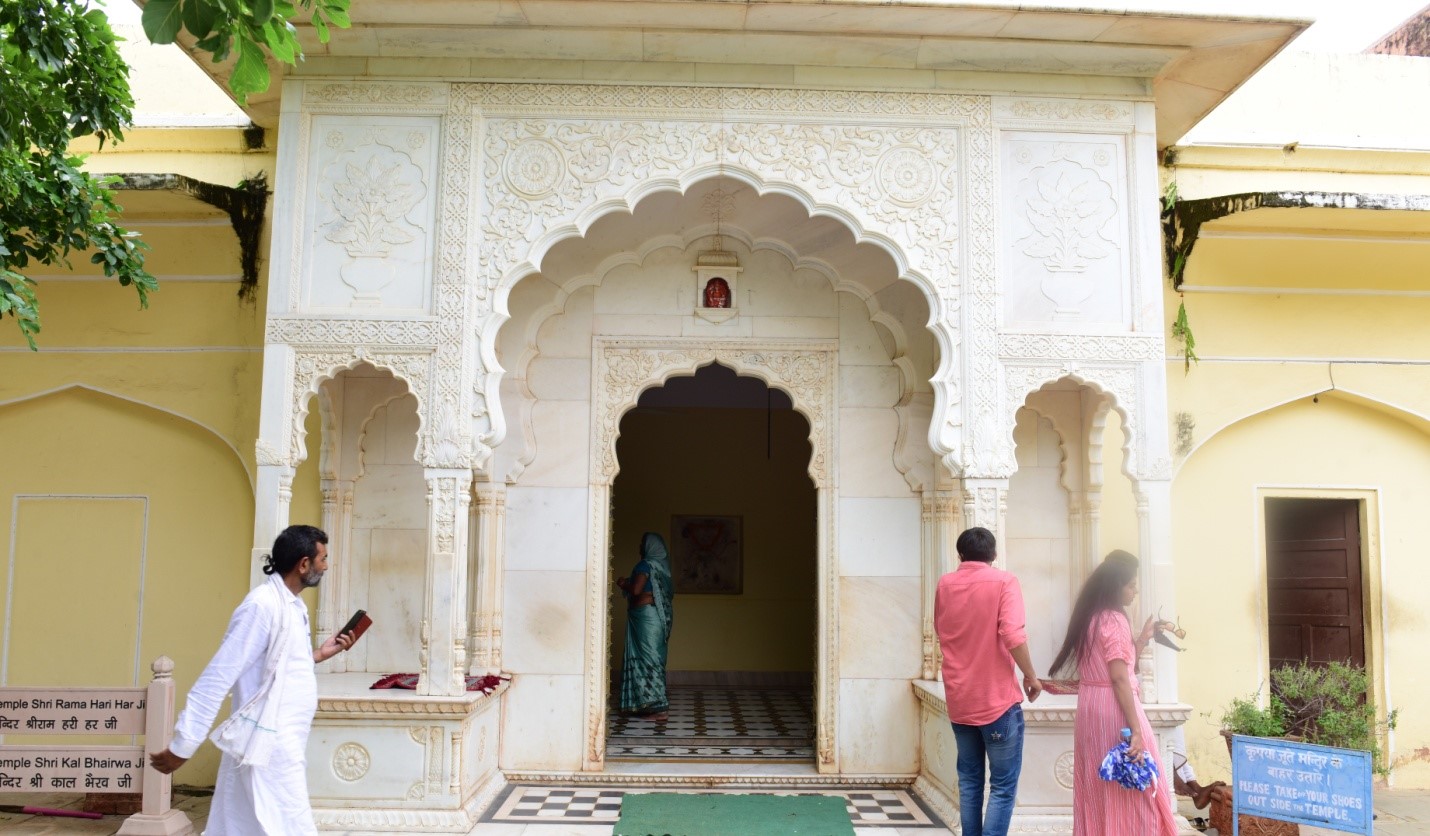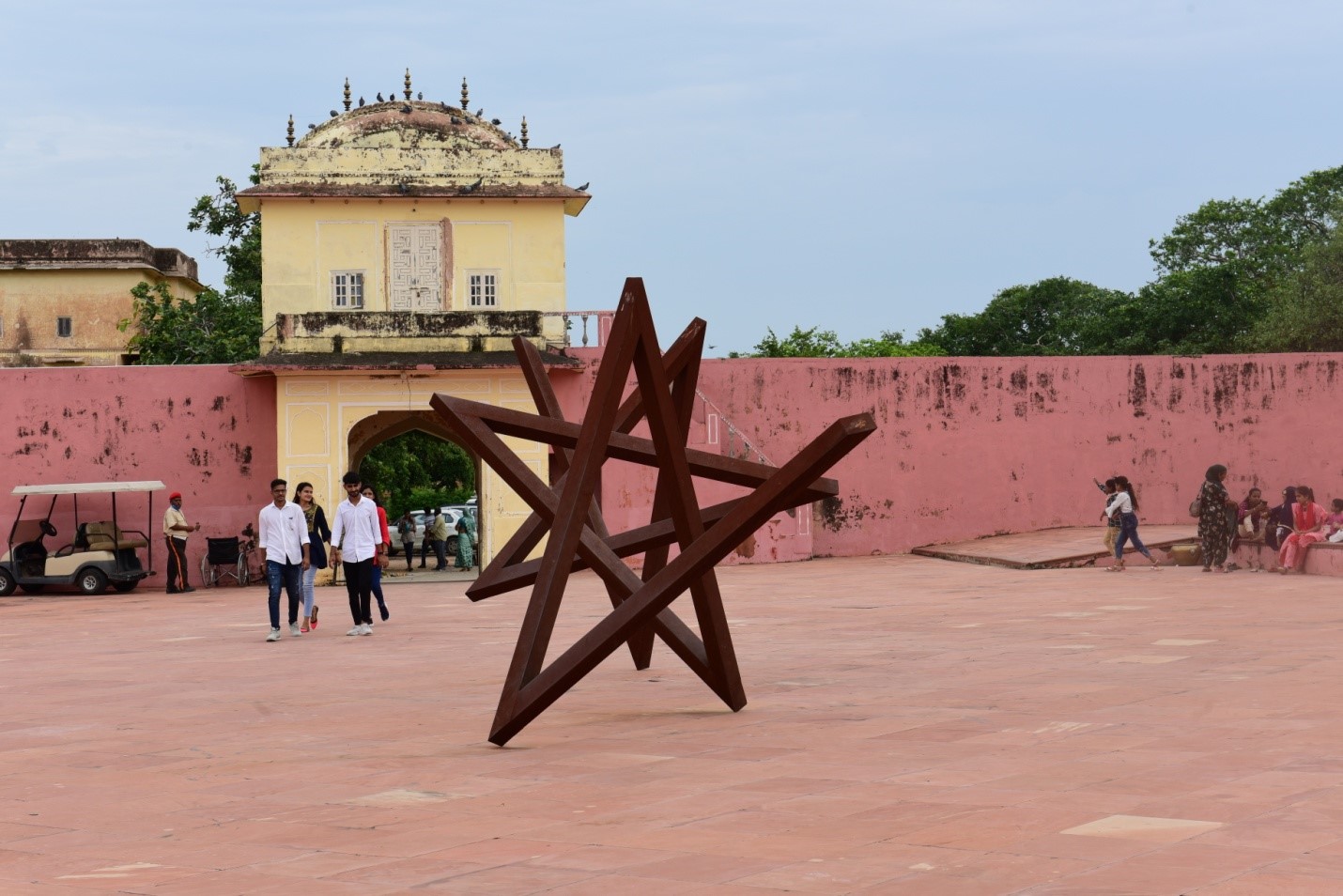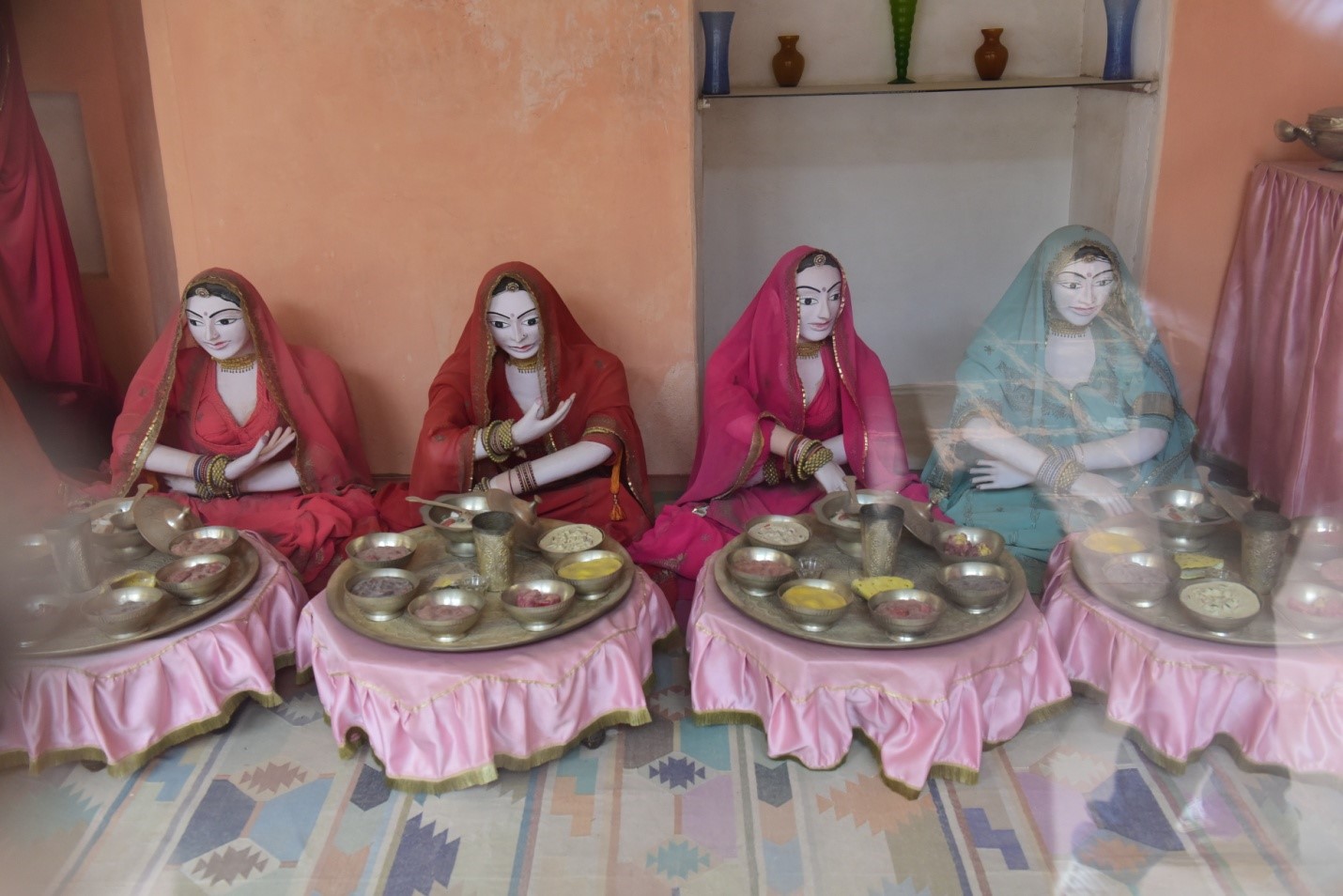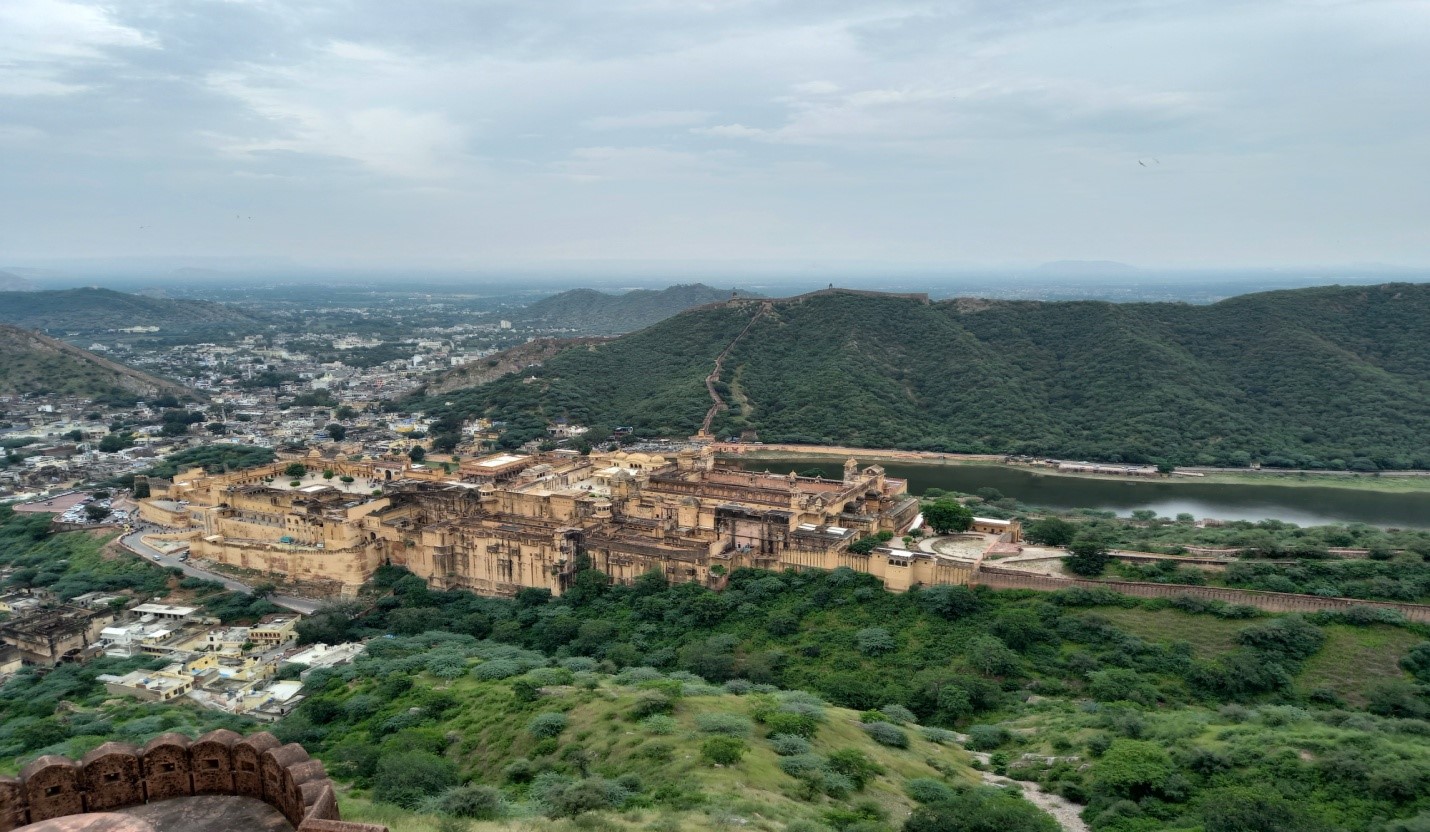


Jaigarh Fort
Jaigarh Fort is situated on the hill called the Cheel ka Teela (Hill of Eagles) of the Aravalli range; it overlooks the Amer Fort and the Maota Lake, near Amer in Jaipur. The fort was built by Jai Singh II in 1726 to protect the Amer Fort and its palace complex and was named after him. The fort, rugged and similar in structural design to the Amer
Fort, is also known as Victory Fort. It has a length of 3 kilometres along the
north–south direction and a width of 1 kilometre. The fort features cannon
named "Jaivana, which was manufactured in the fort precincts and was then
the world's largest cannon on wheels. Jaigarh Fort and Amer Fort are connected
by subterranean passages and considered as one complex.
The Jaigarh Fort, located on one of the peaks of the Aravalli
range of hills is built about 400 m above the Amer Fort. It provides an
excellent of view of Aravalli hills and the Amer Fort down below.
The fort is 10 kilometres away from Jaipur city. It stands on a
short diversion from the Jaipur-Delhi Highway, which leads to the Jaivaan
cannon at the Dungar Darwaza or
"gate", the same road leads to another important fort called the
Nahargarh. It can also be approached from the Amer Fort over a short climb
along a steep hill track, arriving at the Awami Gate near the fort museum
Amer was known in the ancient and medieval
period as Dhundar (meaning attributed to a sacrificial mount in the
western frontiers) which was ruled by Meenas before 10th century AD. What is
known in the present day as Jaigarh Fort, which was actually the main defensive
structure rather than the palace itself? The two structures are interconnected
by a series of encompassing fortifications and ruled by
the Kachhawahas from the 10th century onwards. The history of Amer and
Jaigarh is indelibly linked to these rulers, as they founded their empire at
Amer.
During the reign of the Mughal Emperor
Shahjahan, Jaigarh Fort, which is located 150 miles south-west of Delhi, became
one of the world's most efficient cannon foundries mainly due to the abundance
of iron ore mines in the vicinity of the fort. The cannon foundry
Jaigarh Fort had a massive wind tunnel that sucked air from the high mountains
into its furnace creating temperatures as high as 2,400 °F (1,320 °C),
the heated air would melt the metal. The molten metal would fill a reservoir
chamber and pass into a cannon mould in the casting pit. Most of those cannons
were massive, mostly 16 ft long and had to be prepared within a single
day.
The
Rajputs also built a large ingenious mechanical device that had a precision
gear system driven by four pairs of oxen, the device was used for
hollowing out the cannon barrels. When the Mughal war of succession broke out
in 1658 Dara Shikoh secured the cannon outpost of Jaigarh Fort until
he was defeated and executed by his younger brother Auranzeb. Later
however, the Mughal Emperor Muhammad Shah appointed Jai Singh
II as the official Mughal quiladar of Jaigarh Fort according to
a Firman, ultimately Jai Singh II is known to have moulded the great
Jaivana Cannon by utilizing the important foundry and devices inside Jaigarh
Fort.
The fort is highly fortified with thick walls of red sandstone
and is spread over a layout plan with a length of 3 kilometres and a width of 1
kilometre; it has an impressive square garden of 50 metres within it. Ramparts in each corner are
sloping and provide access to the upper level structures. The palaces have
court rooms and halls with screened windows. A central watch tower on a raised
ground provides excellent vistas of the surrounding landscape. The Aram Mandir
and the garden within its courtyard, on the northern side of the fort complex,
has a triple arched entrance "The Awani Darwaza" which was
refurbished in recent times to get fine views of the Sagar Lake (an artificial
lake); water from this lake used to be transported to the fort in pouches loaded
on elephant backs and also by humans carrying water pots. The triple arch
gateway with fortification walls above it is painted red and yellow. It is
oriented in an east–west direction and faces west. The architectural features
are of Indo-Persian style with cyclopean walls built with dressed
stone and plastered with lime mortar. There are two temples within the
fort precincts, one is the Ram Harihar temple of the 10th century and the other
one is the Kaal Bhairav temple of 12th century vintage.
Charbagh Garden at
Jaigarh Fort
The water supply facilities in the fort was met by creating
water harvesting structures in the vicinity in the Aravalli catchment and
conveying water through a canal on the west side of the fort over a 4
kilometres distance to be stored in three underground tanks below the central
courtyard. The largest tank had a capacity of 6 million gallons of water.
Timinings:
The gates of Jaigarh Fort open at 0900 hours and close at 1645
hours throughout the week. It is not advised to stay here in the evening as
Jaigarh Fort is surrounded by thick deciduous forest. Nahargarh
sanctuary is a part of the forest, and therefore wild animals lurk in the
dark.
